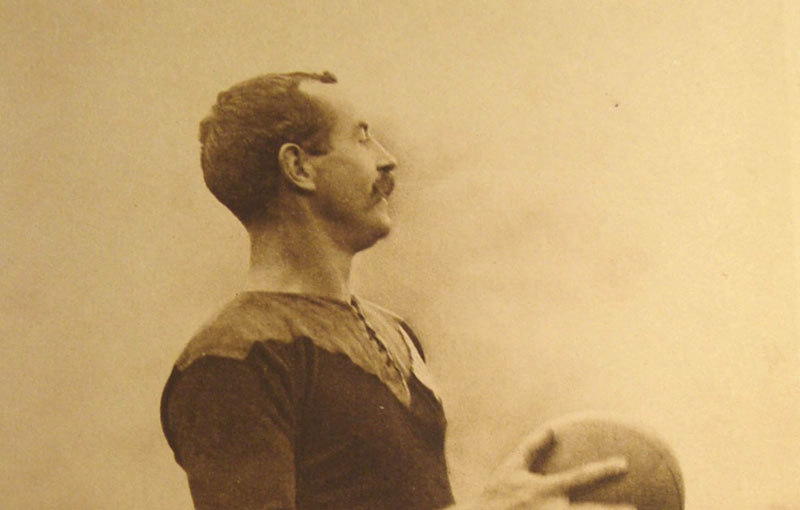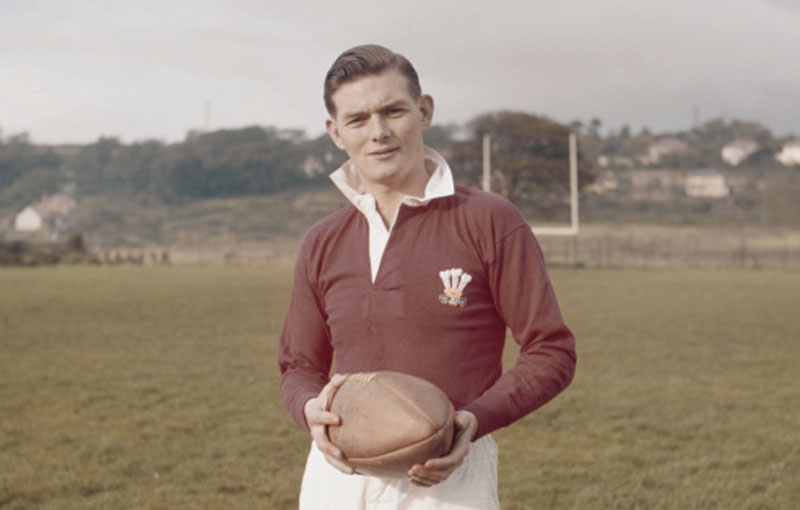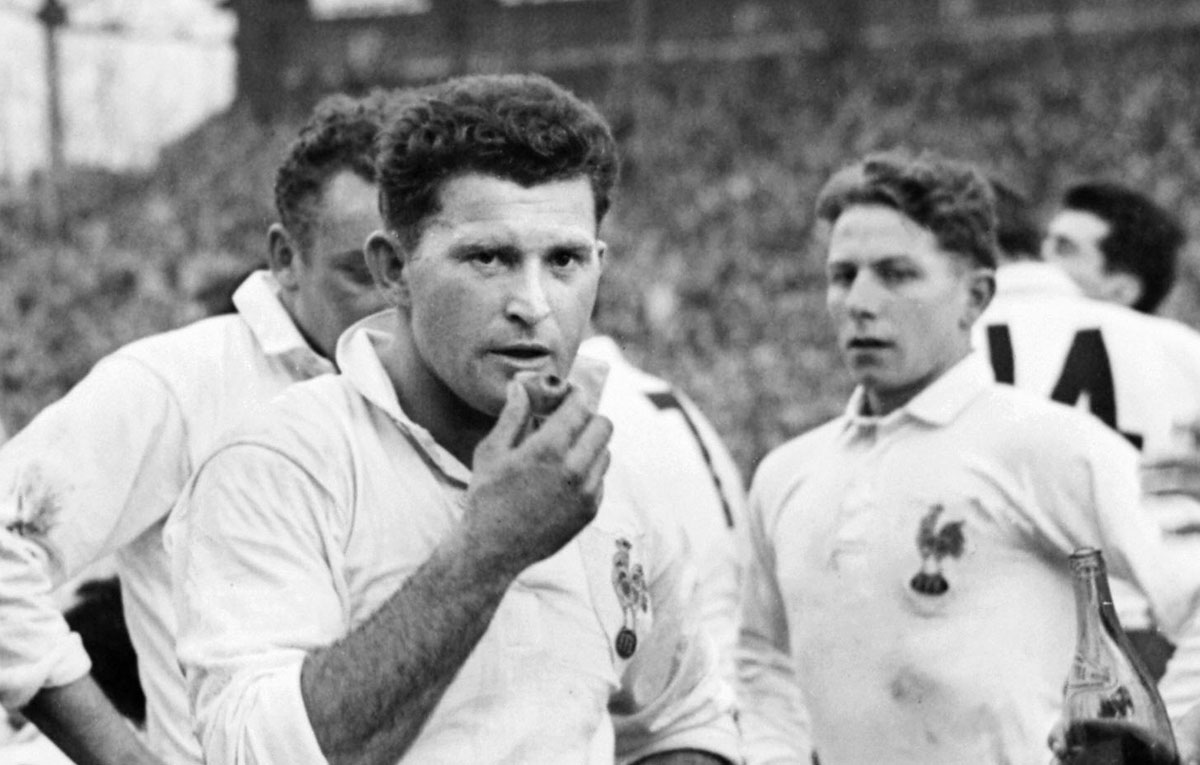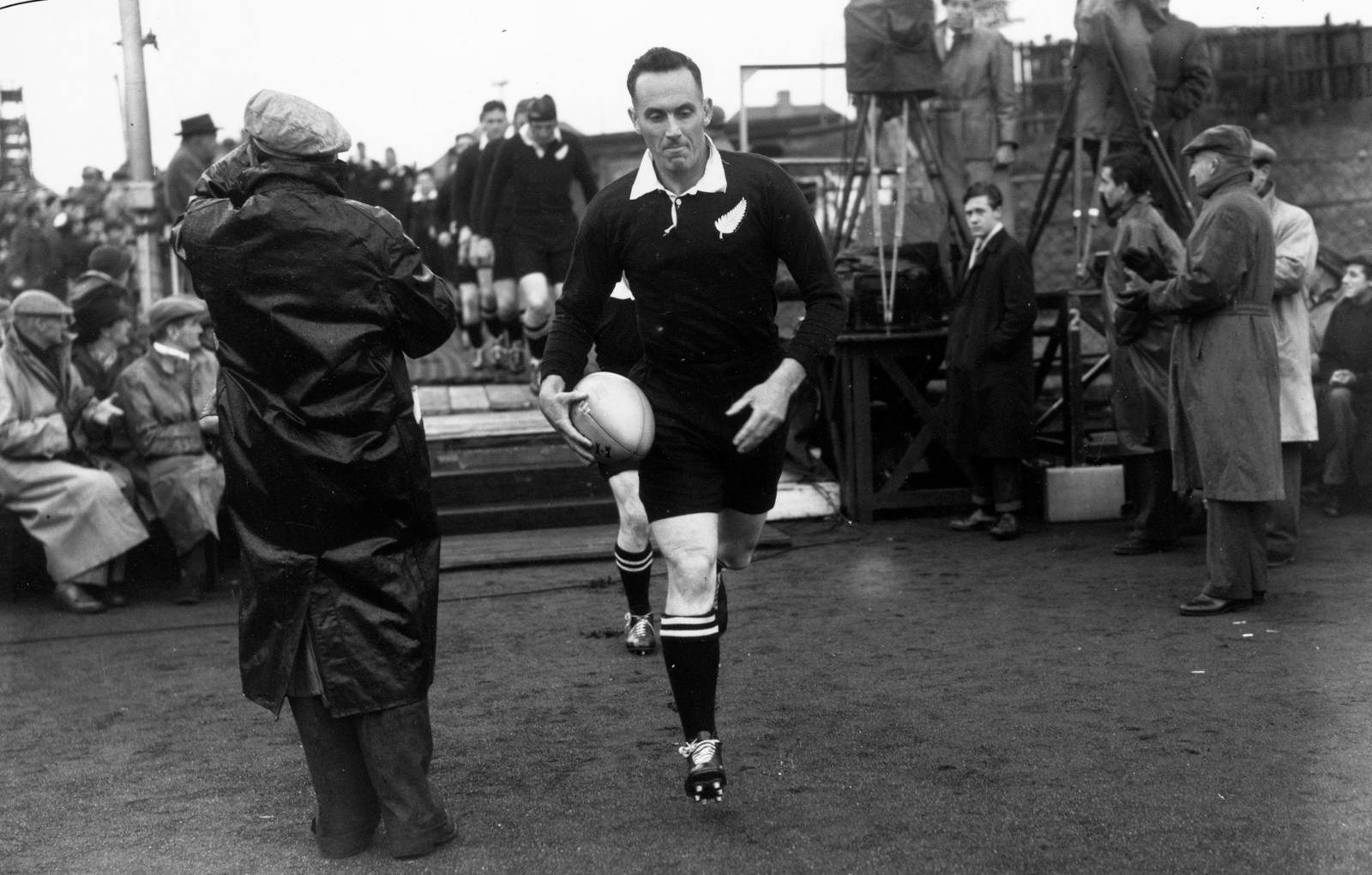David Gallaher: The Detached Wing Forward
In 1905, the All Black legend came into being. At its head was the taciturn David Gallaher, captain and detached wing forward.
In a Belgian field, stood shoulder to shoulder with brothers and adorned with a silver fern, there is a place that will be forever New Zealand.
It is the final destination for one of rugby’s great pilgrimages, one many All Blacks and New Zealanders have taken, and the inscription on the headstone belies the greatness of the person it commemorates.
Rugby gave so much to the First World War; not least the one hundred and thirty international rugby players who are known to have died, but also the scores of players from clubs across the world. One of those was David Gallaher, who on the 4th October 1917 during the Passchendaele offensive, was wounded by a piece of shrapnel, dying later the same day. That the grave of this man should be the site of rugby worship was cemented over ten years earlier. In 1905, Gallaher captained perhaps the greatest ever All Black side on their tour of the British Isles, France and North America, and caused great consternation in the process.
Born in Ramelton, Ireland in 1873, Gallaher’s family emigrated to New Zealand when he was a child and he eventually settled in Auckland. He began playing rugby with Ponsonby RFC, before being selected for the Auckland provincial side.
His rugby was partially put on hold between 1901 and 1902 after he signed up to fight in the Anglo-Boer War in South Africa, where he captained a New Zealand military side that won in a competition against other teams in the British forces.
By the time 1905 came around, the New Zealand RFU had finally managed to secure a financial guarantee that would allow them to send a representative team on tour to Britain. They would name Gallaher as captain for the tour, though some of the players would voice their concern at the captain not having been chosen by the players. This led Gallaher, and his vice-captain Billy Stead to offer their resignations, and although these were rejected by the team manager, the players took a vote anyway. The original selections were ratified with 17 out of 29 votes.
The tour is remembered for several reasons, not least because it was the first tour outside of Australasia undertaken by a representative New Zealand national rugby union side (an earlier tour by New Zealand Natives being a private venture), but also because of the scale of the results, and the tactical innovations that were displayed. The team is also referred to as ‘The Original’ All Blacks, and the magnitude of their results shook the British Isles such that they were the measure of future All Black sides.
Despite establishing New Zealand as a rugby powerhouse, the tour brought with it a lot of criticism. Many people in Britain questioned whether New Zealand were in fact adhering to the principles of amateur rugby as set out by the International Rugby Football Board, pointing to the difference in results, and superior fitness. The New Zealanders highlighted the longer game time they played at home, 45 minutes compared to the British 35, as well as the time they spent preparing on the boat over.
The more likely reason for the disparity between the teams was the innovation of the touring side, as well as their discipline and organisation - this was described at the time as a scientific approach, and indeed Gallaher and his vice-captain Billy Stead would go on to pen ‘The Complete Rugby Footballer on the New Zealand System’, which highlights the tactical approach that the team brought with them.
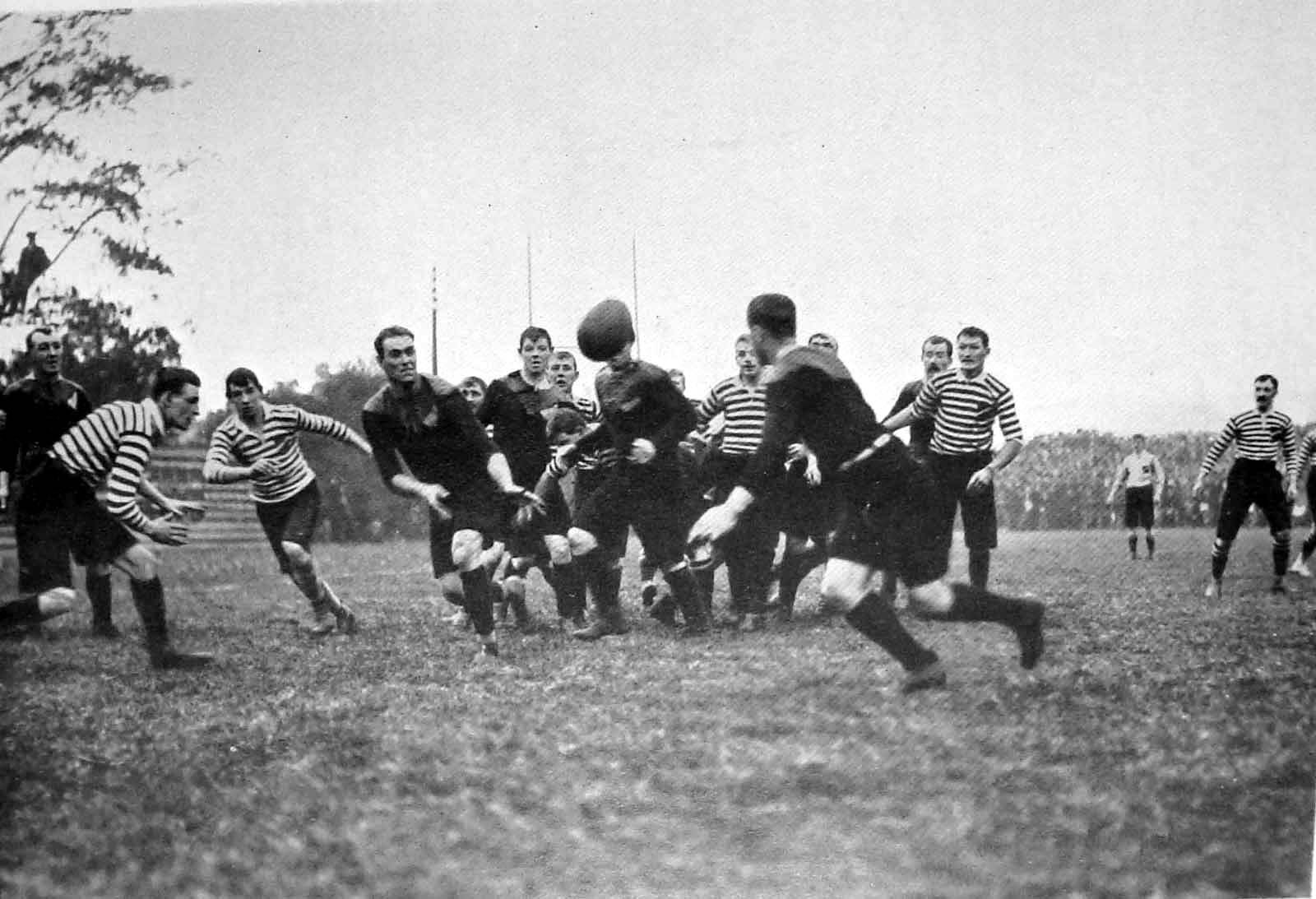
One of these innovations was specific positions in the scrum. At this point in the British Isles, it was a first come, first down approach. If you arrived first you would be in the front row, and so on until the scrum was set. New Zealand on the other hand created an advantage by allowing their players to build up experience in a single position within their system. Further to this, they bound in a 2-3-2 formation (against the orthodox 3-2-3 formation of the time), allowing them an advantage in obtaining the loose side in the scrum, as well as focusing their power onto fewer men in front of them (having a bias to one side of the opposition scrum).
They would persist with this formation (despite its inefficiency against Wales) right through to 1928 when on a tour of South Africa they learnt that seven men struggled to compete against eight. Despite switching to the more recognisable 3-4-1 formation of today for the remainder of that South African tour, they quickly reverted to their usual 2-3-2 on their return to New Zealand. The key advantage to their 2-3-2 formation was that it allowed one of the eight forwards to put the ball into the scrum or harass the opposition.
This was by far the greatest cause of consternation for the British press and public, and also the position David Gallaher occupied on the field. Labelled the ‘detached wing forward’, his job was effectively to shield his scrum-half at the scrum. This is where the debate around the position arose; if New Zealand won the ball, he was in front of it, and therefore in an offside position. Even if it was never said out loud, there were murmurs of cheating, and Gallaher was criticised throughout the duration of the tour, despite not being penalised on the field by the referee.
The advantages these tactical innovations afforded New Zealand showed in the score-lines of their matches. Before they played their first test match against Scotland, they had scored 612 points and conceded only 15 against some of England’s leading clubs and counties. They played each of the home nations once, beating Scotland by 12 points to 7 at Inverleith, before going on to beat Ireland at Lansdowne Road and England at Crystal Palace, both by 15 points to 0.
Next, on the 16th December 1905, came Wales, in whom they found their match. No team on the entirety of the tour was able to match New Zealand save the Welsh national side, and to some extent their leading club sides. They narrowly beat Newport, Cardiff and Swansea, but not before losing 3 - 0 to a Wales side that were enjoying one of their greatest periods in rugby.
The game at the Cardiff Arms Park against Wales is not only one of rugby’s great matches, but also a defining moment for each of the nations involved. It will remain in history as the point at which two nations found an outlet for their collective national expression. Once the New Zealand team had performed their haka to the graciously silent crowd, the Welsh sang their national anthem in an effort to stifle its affect on the team. This was the first time a national anthem had been sung before a game.
The Welsh had studied the New Zealand team, and rather unprecedentedly had two practice sessions in the build up to the game. Their aim was to disrupt the New Zealand scrum, and they did this by allowing the All Blacks to set their scrum first, ensuring Wales had the upper hand in choosing the loosehead.
New Zealand did not start the game well, and their first half performance left a lot to be desired. Wales on the other hand had started brightly, and were rewarded for their efforts shortly before half time. Using their advantage in the scrum from 25 yards out, Wales executed a set piece move that saw scrum-half Dicky Owen throw a dummy pass to Percy Bush on his right, before turning to his left and passing the ball to Cliff Pritchard. The ball passed through the back line and found its way to Teddy Morgan, who touched down in the corner.
New Zealand improved their performance towards the end of the first half, asserting their dominance and gaining the upper hand as the whistle for half time was blown. During the second half, the game was a more balanced affair. It was sometime through the second half that New Zealand finally managed to create a scoring opportunity. Fullback Billy Wallace fielded a kick and managed to break through the Welsh line, before offloading to Bob Deans who was tackled in the process of grounding the ball.
There are varying accounts of what happened next, with Bob Deans adamant that he had scored, right up until his death. Teddy Morgan, who tackled him on the line also hinted that he believed it was a try. Some had said that he was trying to wriggle to the line, and others that he was dragged back. Importantly the Scottish referee John Dallas ruled it as no try, despite reports that he had dressed in heavy clothing and was struggling to keep up with the game, being 30 yards behind play at the time. When he did arrive, he judged Deans short and Wales were awarded a five-metre scrum.
Wales’ single try would go on to win them the game 3-0, and it would be a defining moment for both nations. Not only was it the first time on the tour that New Zealand had lost a game, but it was the first time in their test history they had lost too. They would close out the tour by beating France in Paris, before travelling home via North America and beating British Columbia in two games. They would score 976 points over the duration of the tour, conceding just 59, setting a precedent that every All Black touring side would try to emulate. It would be 19 years before they returned to British shores, and while the First World War played a part, it is more likely the collective unease around New Zealand’s forward play.
New Zealand’s scrum formation would eventually be outlawed and the detached wing forward would disappear from the game. The tactic continued to cause a great deal of strife between the Home Unions and New Zealand, and the 1930 British Lions side would criticise the practice during their tour. Finally, the IRB passed a law in 1931, forcing the ball to pass three feet of the front row before being hooked, which made the 2-3-2 formation largely impractical.
David Gallaher would play 36 times for the All Blacks, of which 6 were test matches. He was noted as an outstanding leader, and one of the foremost thinkers in the game of rugby, as evidenced by his writing. Having returned from the tour, he would retire from playing rugby and focus on coaching, becoming sole ‘selector’ for the Auckland provincial side in 1906, and help them successfully defend the Ranfurly Shield through to 1913. He was also the New Zealand national team selector between 1907 and 1914, during which time the team played 50 matches, winning 44.
By May 1916, Gallaher was 42 and exempt from conscription but signed up anyway. His grave stone at Nine Elms Cemetery incorrectly gives his age as 41, after he altered his date of birth to 1876. He was nearly 44 at the time of his death.
Auckland honoured Gallaher as far back as 1922, presenting the Gallaher shield to the winner of the unions premier mens competition, and it is perhaps fitting that Gallahers club Ponsonby have won the competition more than any other.
When the ‘Originals’ travelled to France, it was the first time the French had played a test match, and since then the two nations have been involved in some of the greatest games throughout history. It was decided that this rivalry should be commemorated with the awarding of a trophy, named after Gallaher. Aside from France holding the trophy in 2009, New Zealand have been winners since it was introduced in 2000.
Gallahers life had moulded him into the leader he became. He was in fact a quiet man, preferring to lead by example, and the sense of duty and loyalty imbibed in him during the Boer War served as his template for captaincy.
That he was taken from the game too soon has only served to enhance his legend, but his true legacy is that he helped make the All Blacks who they are today.

Filed under:
Legend Series, New Zealand
Written by: Edward Kerr
Follow: @edwardrkerr · @therugbymag
